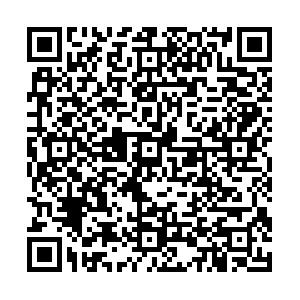Food safety and risk assessment for prepared beverage around the campus in Wuxi
-
摘要:
目的 了解无锡市校园周边现制饮料的添加剂使用与微生物污染状况,为中小学生身体健康保障提供参考。 方法 于2022年8—9月,随机从无锡市4个辖区内学校周边饮品店采集现制饮料108份,按照相关食品安全国家标准进行添加剂和微生物的检测,参照《食品安全国家标准 食品添加剂使用标准》和《食品安全地方标准 现制饮料》进行评价。采用χ2检验进行统计学分析。 结果 现制饮料中13种添加剂的使用均未超过相关标准规定限值,果汁中防腐剂检出率(52.78%)高于茶饮(16.67%)和奶茶(27.78%),奶茶中色素检出率(16.67%)较茶饮(52.78%)及果汁(47.22%)低(χ2值分别为11.24,11.46,P值均<0.05)。同一功能添加剂叠加使用均未超过规定限值;菌落总数超标率(9.26%),大肠埃希菌超标率(14.81%)。 结论 无锡市校园周边现制饮品存在一定卫生学风险。应对相关企业、商店加强监督管理,确保学生食品安全。 Abstract:Objective To investigate the use of additives and microbiologic contamination in prepared beverages around campus in Wuxi City, so as to provide reference for ensuring the physical health of primary and secondary school students. Methods From August to September 2022, 108 prepared beverage were randomly collected from beverage stores around campus in four districts of Wuxi City. The food additives and microbiologic contamination were detected by the national standard method and evaluated according to the National Food Safety Standards for the Use of Food Additives and Local Food Safety Standards for Ready-made Beverages. Chi-squared test was used for statistical analysis. Results The use of 13 additives in prepared beverages didn't exceed the limits specified in relevant standards. The detection rate of preservatives in fruit juice (52.78%) was higher than that in tea (16.67%), and milk tea (27.78%), while the detection rate of pigments in milk tea (16.67%) was lower than that in tea (52.78%) and fruit juice (47.22%)(χ2=11.24, 11.46, P < 0.05). The overlapping use of the same functional additive did not exceed the specified limit. The exceeding rate of total bacterial count was 9.26%, and Escherichia coli was 14.81%. Conclusion There are certain food safety risks in prepared beverages around the campus in Wuxi City. Relevant enterprises and shops should strengthen supervision and management to ensure food safety for students. -
Key words:
- Beverages /
- Food additives /
- Food microbiology /
- Food contamination
1) 利益冲突声明 所有作者声明无利益冲突。 -
表 1 不同类型现制饮料样品中各种添加剂检出率
Table 1. Detection rate of various additives in different types of prepared beverage samples
添加剂 选项 奶茶(n=36) 茶饮(n=36) 果汁(n=36) 甜味剂 阿力甜 0 0 0 阿斯巴甜 0 0 2(5.56) 糖精钠 0 0 0 甜蜜素 1(2.78) 0 2(5.56) 小计 1(2.78) 0 3(8.33) 防腐剂 苯甲酸 4(11.11) 0 2(5.56) 山梨酸 9(25.00) 6(16.67) 18(50.00) 小计 10(27.78) 6(16.67) 19(52.78) 色素 赤藓红 0 0 0 亮蓝 0 0 0 柠檬黄 0 1(2.78) 4(11.11) 日落黄 6(16.67) 18(50.00) 15(41.67) 苋菜红 0 0 0 新红 0 1(2.78) 0 胭脂红 0 0 7(19.44) 小计 6(16.67) 19(52.78) 17(47.22) 注:()内数字为检出率/%。 -
[1] 上海市食品药品监督管理局. 食品安全地方标准现制饮料: DB 31/2007—2012[S]. 北京: 中国标准出版社, 2012.Shanghai Food and Drug Administration. Local food safety standards-ready-made beverages: DB 31/2007-2012[S]. Beijing: China Standard Press, 2012. (in Chinese) [2] 王海玲. 添加剂引发的食品安全问题及治理[J]. 中国食品工业, 2021(1): 123-124. https://www.cnki.com.cn/Article/CJFDTOTAL-SPZG2021Z1038.htmWANG H L. Food safety issues caused by additives and their management[J]. China Food Ind, 2021(1): 123-124. (in Chinese) https://www.cnki.com.cn/Article/CJFDTOTAL-SPZG2021Z1038.htm [3] 中华人民共和国国家卫生和计划生育委员会. 食品安全国家标准食品中苯甲酸、山梨酸和糖精钠的测定: GB 5009.28—2016[S]. 北京: 中国标准出版社, 2016.National Health Commission of the PRC. National food safety standards-determination of benzoic acid, sorbic acid, and saccharin sodium in foodss: GB 5009.28-2016[S]. Beijing: China Standard Press, 2016. (in Chinese) [4] 中华人民共和国国家卫生和计划生育委员会. 食品安全国家标准食品中阿斯巴甜和阿力甜的测定: GB 5009.263—2016[S]. 北京: 中国标准出版社, 2016.National Health Commission of the PRC. National Food Safety Standards-determination of aspartame and alitame in foods: GB 5009.263-2016[S]. Beijing: China Standard Press, 2016. (in Chinese) [5] 中华人民共和国国家卫生和计划生育委员会. 食品安全国家标准食品中环己基氨基磺酸钠的测定: GB 5009.97—2016[S]. 北京: 中国标准出版社, 2016.National Health Commission of the PRC. National food safety standards-determination of sodium cyclohexylaminosulfonate in foods: GB 5009.97-2016[S]. Beijing: China Standard Press, 2016. (in Chinese) [6] 中华人民共和国国家卫生和计划生育委员会, 国家食品药品监督管理总局. 食品安全国家标准食品微生物学检验总则: GB 4789.1—2016[S]. 北京: 中国标准出版社, 2016.National Health Commission of the PRC, National Food and Drug Administration. National food safety standards-food microbiological analysis: GB 4789.1-2016[S]. Beijing: China Standard Press, 2016. (in Chinese) [7] 中华人民共和国国家卫生和计划生育委员会. 食品安全国家标准食品添加剂使用标准: GB 2760—2014[S]. 北京: 中国标准出版社, 2014.National Health and Family Planning Commission of the PRC. National food safety standards-standards of using food additives: GB 2760-2014[S]. Beijing: China Standard Press, 2014(in Chinese) [8] 徐春婷, 范栋. 食品添加剂使用方面存在的问题及对策探讨[J]. 食品研究与开发, 2013, 34(23): 137-139. https://www.cnki.com.cn/Article/CJFDTOTAL-SPYK201323041.htmXU C T, FAN D. Application issues of food additive in China and solution strategies[J]. Food Res Dev, 2013, 34(23): 137-139. (in Chinese) https://www.cnki.com.cn/Article/CJFDTOTAL-SPYK201323041.htm [9] 李琎杰. 食品添加剂引发的食品安全问题及其解决对策分析[J]. 食品安全导刊, 2021(30): 1-2. doi: 10.3969/j.issn.1674-0270.2021.30.spaqdk202130012LI J J. Analysis of food safety issues caused by food additives and their solutions[J]. China Food Safety Magazine, 2021(30): 1-2. (in Chinese) doi: 10.3969/j.issn.1674-0270.2021.30.spaqdk202130012 [10] 孙晓峰, 王伟, 楼颖伟. 2016年义乌市学校周边现做饮料中甜味剂和防腐剂监测结果分析[J]. 实用预防医学, 2018, 25(6): 744-755, 769. doi: 10.3969/j.issn.1006-3110.2018.06.030SUN X F, WANG W, LOU Y W. Analysis of the monitoring results of sweeteners and preservatives in beverages produced around schools in Yiwu City in 2016[J]. Pract Prev Med, 2018, 25(6): 744-755, 769. (in Chinese) doi: 10.3969/j.issn.1006-3110.2018.06.030 [11] 高慧, 汪洋, 王敏, 等. 2018年山东省现制饮料中甜味剂和防腐剂的含量调查[J]. 现代预防医学, 2019, 46(20): 3697-3699. https://www.cnki.com.cn/Article/CJFDTOTAL-XDYF201920011.htmGAO H, WANG Y, WANG M, et al. Investigation of the contents of sweeteners and preservatives in freshly prepared beverage in Shandong Province in 2018[J]. Mod Prev Med, 2019, 46(20): 3697-3699. (in Chinese) https://www.cnki.com.cn/Article/CJFDTOTAL-XDYF201920011.htm [12] 许秋贝. 厦门市现制和自制饮品卫生状况调查与分析[J]. 食品安全导刊, 2021(29): 117-118, 120. https://www.cnki.com.cn/Article/CJFDTOTAL-SPAQ202129079.htmXU Q B. Investigation and analysis on the hygienic status of existing and homemade beverages in Xiamen City[J]. China Food Safety Magazine, 2021(29): 117-118, 120. (in Chinese) https://www.cnki.com.cn/Article/CJFDTOTAL-SPAQ202129079.htm [13] 范旻昊, 张晓莉. 如皋市餐饮业现榨果蔬汁卫生状况调查[J]. 职业与健康, 2009, 25(12): 1267-1268. https://www.cnki.com.cn/Article/CJFDTOTAL-ZYJK200912026.htmFAN M H, ZHANG X L. Investigation on the hygienic status of extracted fruit and vegetable juice in the catering industry of Rugao City[J]. Occup Health, 2009, 25(12): 1267-1268. (in Chinese) https://www.cnki.com.cn/Article/CJFDTOTAL-ZYJK200912026.htm [14] 袁瑞, 黄铮, 宋臻鹏, 等. 湖州市学校周边即食米面食品微生物污染状况[J]. 中国学校卫生, 2020, 41(10): 1576-1578. doi: 10.16835/j.cnki.1000-9817.2020.10.037YUAN R, HUANG Z, SONG Z P, et al. Microbial contamination status of instant rice noodles in the vicinity of schools in Huzhou City[J]. Chin J Sch Health, 2020, 41(10): 1576-1578. (in Chinese) doi: 10.16835/j.cnki.1000-9817.2020.10.037 [15] 杨阳. 学校周边食品安全整治亟需加强[J]. 食品安全导刊, 2014(12): 40-42. https://www.cnki.com.cn/Article/CJFDTOTAL-SPAQ201412025.htmYANG Y. Urgent strengthening of food safety renovation around schools[J]. China Food Safety Magazine, 2014(12): 40-42. (in Chinese) https://www.cnki.com.cn/Article/CJFDTOTAL-SPAQ201412025.htm -

 点击查看大图
点击查看大图
表(1)
计量
- 文章访问数: 437
- HTML全文浏览量: 188
- PDF下载量: 32
- 被引次数: 0





 下载:
下载: